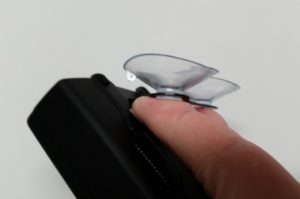 It's the universal question, discussed frequently in forums and social media groups, and is usually the first concern after someone purchases one to install in a vehicle for the first time. Where is the best place to mount a radar detector?
It's the universal question, discussed frequently in forums and social media groups, and is usually the first concern after someone purchases one to install in a vehicle for the first time. Where is the best place to mount a radar detector?
We covered this over a decade ago in our article Where Should You Mount Your Radar Detector? But times have changed. Technology has advanced, and there are new rules of the road when it comes to traffic enforcement and countermeasure strategy. Considering this, does placement even matter anymore, or do the old guidelines still apply? Where is the best place to mount a radar detector today? Or is there one?
Why is placement important?
Placement of a radar detector is critical to its performance. Detectors operate by line of sight, meaning that the detector needs to be able to "see" the signal in order to detect it. Any obstruction can potentially diminish, deflect or block the incoming radar signal or laser beam entirely from the detector's view. It also needs to be aimed in the general direction of the signal to pick it up. This is important if it's a radar signal, but is even more important if it is a laser beam. Radar signals are rather broad, but a laser is very narrow, so the detector must be positioned to pick it up directly. Remember, if the detector can't see the signal, it can't tell you where it is, or if one is even there. Therefore, correct positioning is vital to the performance of any detector.
Is the type of radar detector important?
Before we go any go further, it is important to note that the answer to the mounting question depends somewhat on the type of radar detector used. There are two distinct types of detectors, portable and installed. The portable detector, also known as a dashmount or windshield mount detector, is exactly as these terms imply. It mounts somewhere on the dashboard or windshield of a vehicle, and is aimed through the windshield, over the hood toward the front. An installed or concealed detector is one that is actually installed or integrated into parts of the vehicle itself, with sensors usually concealed below the hood and around, on or behind the front grille. Additional sensors can be placed on the rear of the vehicle as well.
Installed detectors
The sensors for an installed detector are usually placed somewhat low. Since they are usually situated directly at the front and (optionally) rear of the vehicle, they have a clear line of sight for a broad, unobstructed view of the perimeter around it. This allows a lot more latitude for discreet, low mounting options.
Where to place a dashmount detector
Portable or dash mount detectors are a different story. Since they are typically situated behind the windshield, their line of sight is somewhat limited by the frame of glass around it, plus the obvious obstruction of the front hood. However, there are other obstructions that affect performance. Tinted windshields in the visor area at the top can greatly reduce detection. The angle of the windshield can also be a factor. Inspection, parking or other stickers can get in the way. So can windshield wipers. Built-in defrosters, sensors or coatings in the glass can also effect performance. Some states even have laws to regulate where you can or cannot place items on your windshield or dashboard. These are all important factors to consider, and some may greatly limit your mounting options. Consider them all before you mount the detector.
Go high or go low?
Ten years ago, the low or high mounting question depended largely on the type of signals your radar detector detected. If it was primarily radar, conventional wisdom was to mount high, preferably attached to a rear view mirror or visor. This was advised so the detector could see over the hood of the vehicle to maximize line of site for detection of radar signals. If it was primarily set up for laser, the general rule of thumb was to mount low, closer to the hood, to pick up the edge or scatter from laser beams aimed at the headlights or front plate of the vehicle. But that was ten years ago. Although police laser certainly existed, it wasn't widely used, and some radar detectors had limited capabilities for laser detection. Some had no laser detection at all.
Today, radar guns are still the standard, but use of police laser for speed enforcement is on the rise. Fortunately, all of the domestic brand radar detectors marketed in the US today are capable of both radar and laser detection and it is now quite advanced. Many detectors offer multi-angle or 360 degree detection of laser. This changes the optimal position just a bit, because the detector needs to be low enough to get the laser beam from the front, yet high enough to also catch it from the rear of the vehicle. However, the general rule still applies. Mount low for laser, and a little higher for radar detection only. If detecting both, aim for the sweet spot.
The sweet spot
This may vary depending on the design of your vehicle, including the length and and height of your hood. It will also depend on the other factors mentioned above. The general rule though, is to mount your detector low, either from the the windshield or dash, and if it's dash mount, try to get close to the windshield to maximize peripheral line of sight and minimize obstructions. Although low mounting will shorten radar range, it should still be acceptable, and it will significantly increase detection of laser. Also, be sure the detector is level for a straight view through the windshield, and adjust for the angle of the glass if it is mounted to it. Don't let it point upward or downward, keep it even with the road ahead.
Any detector can only alert you to the threats it can detect. To maximize its performance and value, the best place to mount a radar detector is from a similar vantage point to that of the driver, one that gives it the clearest, least obstructed view of threats on the road.

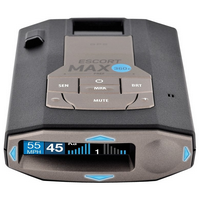
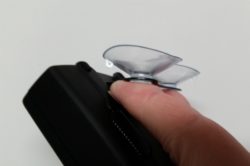
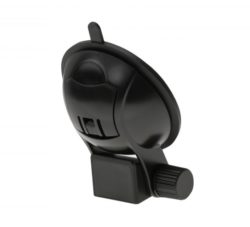
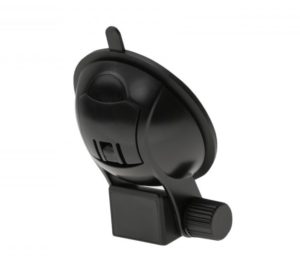 Radar detector suction cup windshield mounts come in various shapes and sizes. Some are designed for specific models, others for a specific series of models or an entire brand. One can even find a
Radar detector suction cup windshield mounts come in various shapes and sizes. Some are designed for specific models, others for a specific series of models or an entire brand. One can even find a 
